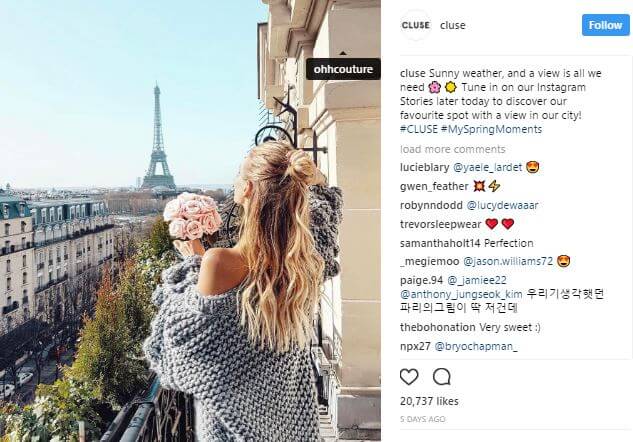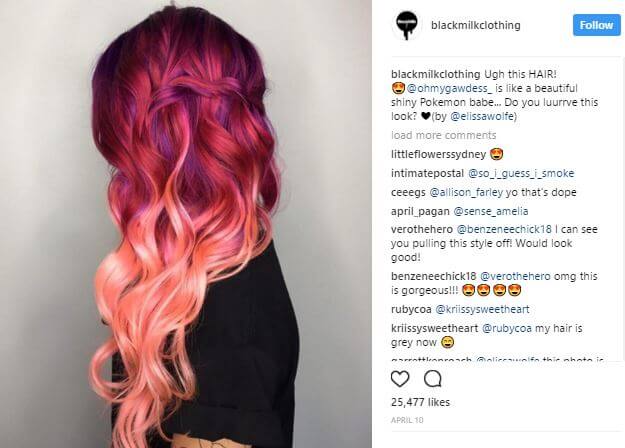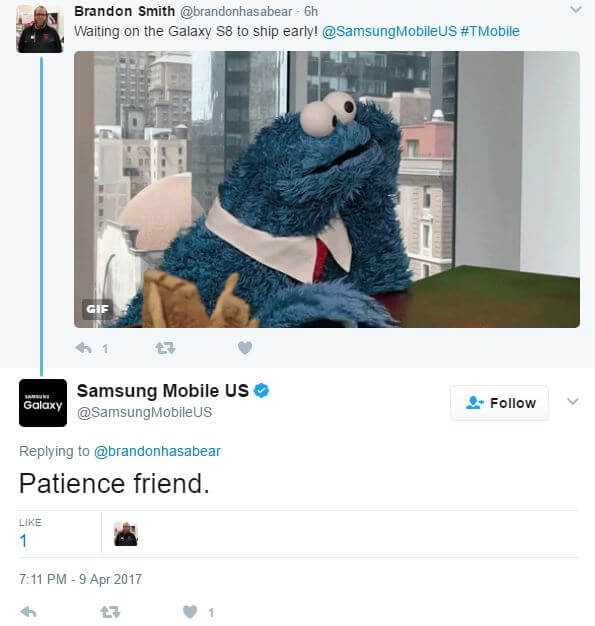Table of Contents
It’s high time that the marketing world rethinks what an effective social media manager actually does. Hint: it’s not chasing “likes” or showing off their follower counts.
Let’s face it: so many brands today totally miss the mark when it comes to their social content. Maybe their posts come off as too “salesy.” Perhaps they’re pushing too hard, leaving their followers behind in an endless trail of “look at me” posts. Either way, the dark days of brands blasting out their own content at random have gone the way of the dinosaur. Meanwhile, anyone who thinks that mindless sharing and “liking” represent a legitimate social strategy is in for a rude awakening.
Why not check out our post on eCommerce Technology trends in fashion.
Brands today can take a page out of Wendy’s social marketing playbook by leveraging UGC as their not-so-secret weapon.
So, how can brands today integrate UGC within their content strategies? What does a so-called strategy look like in action?
But most importantly, why is UGC a must-do for modern social marketers?
In a day and age where your followers are drowning in a sea of sales pitches and marketing messages, the benefits of a UGC strategy are difficult to deny. Sure, branding bonuses such as increasing audience interaction and trust are a plus; meanwhile, consider that 25% of search results from today’s largest brands are linked to UGC.
In other words, UGC is a potential goldmine for traffic, sales and last but not least, engagement.
Here’s the deal: modern social media has little to do with vanity metrics such as “Likes” and artificial follower counts. What good are your 10,000 or 250,000 followers if they result in no meaningful leads, conversions or sales?
The formula for strong social content today isn’t rocket science: it’s simply a matter of finding clever ways to engage with your audience.
Now, I’ll level with you: “engage your audience” is pretty vague advice. Similarly, what exactly does being clever have to do with effective marketing?
Check out this brilliant example of savvy social engagement from Wendy’s (note: this interaction has become the most-shared tweet of all time):
The story here is pretty simple: a teenager’s seemingly innocent tweet in pursuit of free chicken nuggets went viral after Wendy’s took the time to respond to his ridiculous request.
In less than 10 characters, Wendy’s managed to take an offhand comment from a follower and turn it into millions of retweets and national media attention.
Not bad, right?
To be fair, Wendy’s is a massive brand with nearly 2 million followers; however, this tweet is proof that our content doesn’t necessarily need to be groundbreaking to grab the attention of our followers.
Similarly, this tweet is a shining example of what a social media manager should be doing to encourage engagement on behalf of their audience.
There’s that word again: engagement.
Let’s break down what engagement actually means for a social media manager. When in doubt, an effective social strategy is rooted in the following three elements:
eCommerce brands can follow the exact same rules when it comes to their social content. In fact, that’s exactly what they should be doing.
And what’s the easiest way to create that ever-so-valuable sense of engagement with your audience?
You can probably guess the most common reason why brands lose followers on social media, can’t you?
According to a study by Sprout Social, approximately 57% of social users cited “too many promotions” as the number one reason they unfollow brands.
Constant self-promotion is a surefire way to drop your follower count and tune out your audience.
Sure, your followers became followers in the first place because they were interested in what you were saying or selling. That being said, brands still need to be tactful in terms of how they present their products.
User Generated Content represents a win-win for brands and followers alike. Not only does UGC remove the sales pitch from your promotional posts, but also shows off your products in action.
This regram from LuLaRoe is a prime example of building buzz by piggybacking off of User Generated Content:

Millenials, in particular, see UGC as trustworthy versus traditional advertising. Brands should strive to take each and every opportunity to sell beyond the realm of boring product pages.

Instead, products should be placed in a real-world setting which is both eye-popping and helps your followers visualize a personal connection with your brand.
Speaking of personal connections, consumers today want to put their trust into people versus brands.
This is especially true when it comes to the younger crowd. The up-and-coming generation of millennial consumers not only desire UGC versus promotional content, but also brands whose messages and values they can get behind.
The key takeaway here? Brands are expected to create an emotional connection through conversation rather than spout the same promotional posts again and again.
Perhaps the easiest way for brands to establish a sense of rapport with their followers is by showing off their personality. Social media managers could learn a thing or two from brands such as Denny’s who consistently flaunt their sense of humor and playful interactions with their followers.
For social marketers, tone and personality represent subtle elements of content promotion that are easy to overlook. Consider how small touches of humor or attitude within your Instagram captions or tweets can remind your followers that behind every brand interaction is a real-life person, not a robot.

As a quick aside, bear in mind that not every social media manager needs to be stand-up comedians. According to the aforementioned Social Sprout study, one-in-three social users will unfollow a brand for “trying to be funny when they’re not.”
Ouch.
Humor in marketing represents a balancing act: while the advice for social media managers to “be yourself” may seem cliché, certain brands may be better suited for a more “traditional” tone (think: high-end, luxury fashion eCommerce brands).
Whatever route you decide to go when it comes to tone and UGC, make an effort to be genuine rather than trying to fake a marketing message that doesn’t jive with your brand.
Part of the beauty of social media is the fact that followers and brands are on a level playing-field. Both parties are just an “@” away from each other. This eye-to-eye marketing is a far cry from traditional advertising where brands are the ones doing all of the talking while consumers sit back and listen.
Think about it. The ability to interact with followers in real-time not only serves as means of customer service but also a tool for curating User Generated Content.

Every tag and reply on behalf of brands represent both an opportunity to reach out to followers and show them some love. The swifter you are to respond to followers, the more likely you are to be labeled as a listener and receive more engagement in the future.
For example, H&M regularly responds to customer questions and concerns on their Instagram posts:

Remember: customers not only want responses from brands, they expect them. Although responding to your followers may not seem like a make or break situation from a marketing perspective, 5 in 6 messages in need of a response on behalf of followers are never answered.
Besides, a quick response or boost on behalf of your followers is relatively a quick and painless process. Taking the time to both seek out and respond to your audience is a small touch that most brands aren’t willing to commit to. The social media manager that does pay close attention to their followers ultimately set themselves apart from the crowd.
While we can acknowledge that follower count isn’t everything, it never hurts to bump up your numbers. The more the merrier, right?
Thankfully, User Generated Content can be a potential goldmine of new followers for your feed, all without needlessly spammy posts.
Check out how Vans uses its #MyVans hashtag to simultaneously promote their products and leverage a user-submitted photo to encourage new photos from their followers:
If we delve into the images posted via the hashtag, it’s clear that fans are responding in the form of UGC.
This encouragement is a win-win for Vans: their products spread through the social space at no cost and non-followers are exposed to their tag. Brands that know how to create a hashtag likewise know how to encourage their content to spread like wildfire.
And the best part? There’s no catch. No bait and switch. Nothing.

Again, social users crave opportunities to engage with brands. Ultimately it’s up to a persistent social media manager to provide those respective opportunities to their followers. You’d be surprised at the lengths followers are willing to go through on your behalf if you just ask.
Similarly, “tag a friend” posts and giveaways represent another simple yet savvy strategy to build up your follower count (minus the spam).

Smart hashtags and opportunities to tag friends represent just some of the crafty ways a social media manager can get their brand in front of fresh faces.
Let’s not kid ourselves: sometimes we don’t have the time, energy or resources to come up with killer content day-in and day-out.
However, when a social media manager plays the role of “curator” versus “creator”, their job becomes much easier.
If you’re able to encourage and curate UGC on a regular basis, you instantly lift the burden of constant content creation. Each time a follower tags you, leaves some sort of positive feedback or asks a question, you present an opportunity to use UGC to your advantage.
After all, sometimes our best content isn’t what we create, but rather what others create on our behalf. For example, this retweet is an example of social proof in action thanks to UGC:

If you’re a social media manager, the benefits of encouraging and curating UGC are three-fold:
If nothing else, incorporating UGC into your feed is a fantastic supplement to your existing social strategy. Since User Generated posts are truly organic, they’re a welcome break from pieces that you’d normally create and boost yourself.
The “pump and dump” approach to content via social media is dead and buried. Likewise, if you aren’t giving your followers a voice, you’re inevitably holding back your ability to grow.
While it’s tempting to only want to hear yourself talk, your followers deserve a chance to shine in the spotlight. By encouraging and curating UGC, those opportunities become more obvious and your brand increases its chance to get its message in front of more followers.
Given the fact that so few brands leverage User Generated Content effectively, the sky’s the limit for those who understand the power of engaging your followers in a meaningful manner.
Don’t be one of those social media managers that are serially tweeting their own content and liking posts at random. Instead, put together a content strategy that’s centered in curation instead of scrambling for content and hoping that something sticks. Flowbox’s visual commerce platform provides brands with opportunities to integrate UGC into their content strategies and ultimately make a lasting impression on their audience.
Book a demo of the Flowbox platform today to see for yourself how integrated social media solutions can be beneficial for your business!
Think of it this way: if a two-word tweet from Wendy’s can nearly break the Internet, consider just how much power UGC has for modern brands who haven’t tapped into it yet.